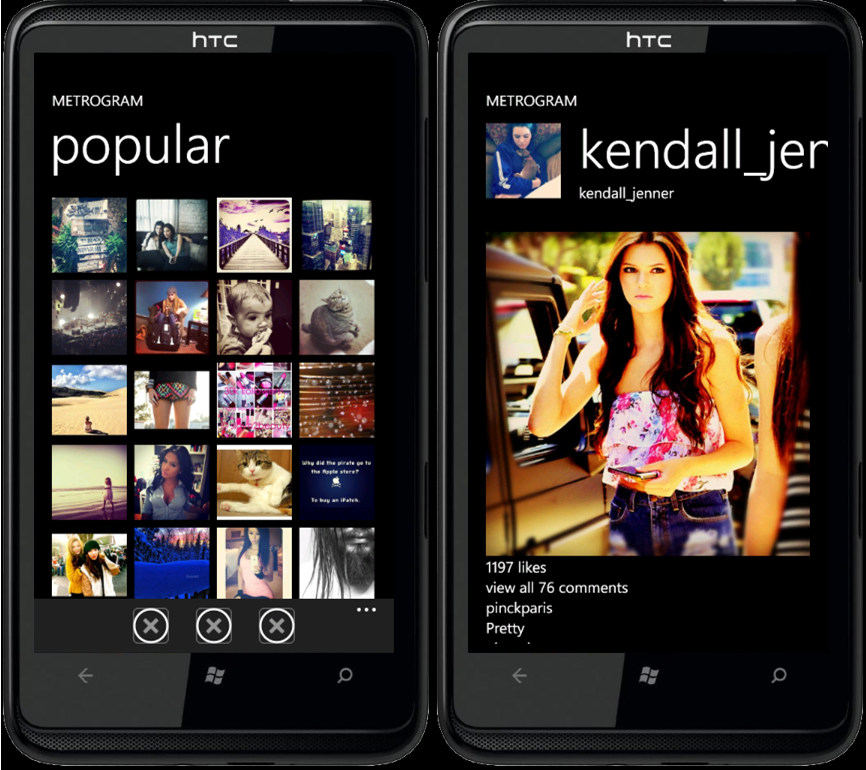Unofficial Instagram app for Windows Phone fights for access

Okay folks, now that it's Monday morning afternoon, we have the skinny on Metrogram, the Instagram client for Windows Phone that we learnt about late last night. The app is being developed by Bil Simser and should be available in two or three weeks.
First the bad news. Indeed, as per Instagram's API requirements, the app is read-only. Still, it offers a lot in terms of functions e.g. browse tags, search for pictures, view details, profiles, leave comments, like pictures, etc.
Now the potential good news. Bil is in contact with Instagram and is trying to get a waiver on their read-only policy and to allow the app to post. If that permission is granted Bil tells us "...a full client will be about 3-4 weeks off (including photo effects similar to the iPhone client)". However, if Instagram does not grant an exception, Bil may try other means by which to get photos up, perhaps something analogous to the MetroPandora SDK i.e. look for workarounds.
Instagram claim that they don't allow 3rd party access for uploads to “fight spam & low quality photos” which at first makes sense until you realize no one is monitoring photo uploads to their service, making it a hollow promise. Surely safeguards could be put into place to prevent spam, such as limiting the amount of uploads over a given time-frame.
We'll definitely keep you posted on what happens with Metrogram and what Instagram has to say about it. One way or another though, we'll get this service on our phones. Just take a look at Pandora. For more info on Instagram, read here at iMore.
Get the Windows Central Newsletter
All the latest news, reviews, and guides for Windows and Xbox diehards.

Daniel Rubino is the Editor-in-chief of Windows Central. He is also the head reviewer, podcast co-host, and analyst. He has been covering Microsoft since 2007, when this site was called WMExperts (and later Windows Phone Central). His interests include Windows, laptops, next-gen computing, and watches. He has been reviewing laptops since 2015 and is particularly fond of 2-in-1 convertibles, ARM processors, new form factors, and thin-and-light PCs. Before all this tech stuff, he worked on a Ph.D. in linguistics, watched people sleep (for medical purposes!), and ran the projectors at movie theaters because it was fun.